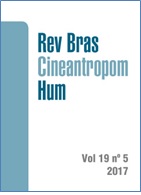Validation of anthropometric models in the estimation of appendicular lean soft tissue in young athletes
DOI:
https://doi.org/10.1590/1980-0037.2017v19n5p505Abstract
Magnetic resonance imaging and computer tomography are gold standards in the measurement of muscle tissue (MT), but are expensive. Dual Energy X-Ray Absorptiometry (DXA) is also costly but safer and allows for the measurement of Appendicular Lean Soft Tissue (ALST), a strong predictor of MT. Alternatively, there are anthropometric models that predict the ALST of Portuguese athletes with low cost/risk that have not been validated in other populations. The aim of this study was to validate anthropometric Portuguese models that predict ALST in young athletes or, if the validation fails, to propose new models. The ALSTDXA of 174 young athletes was determined by DXA. Two anthropometric models (ALSTmod1 and ALSTmod2) measuring ALST among Portuguese athletes were tested. To validate the coefficient of determination, the difference (bias) and concordance correlation coefficient between predicted and actual values were computed. Finally, association between mean and difference of methods was verified. Validation failed and, for this reason, new multiple regression models were proposed and validated using PRESS statistics. The Portuguese models explained ~96% of the ALSTDXA variability. The difference between ALSTmod1 and ALSTDXA (-0.7kg) was less than that found for the ALSTmod2 and ALSTDXA (-2.3kg), with limits of agreement from 3.6 to -2.1 and from 6.1 to -1.5kg, respectively. The new models included three predictive equations for ALST. Only ASLTmod1 was valid; however, it was prone to bias, depending on the magnitude of ALST values. The newly proposed models present validity with greater concordance (r²PRESS=0.98), lower standard error of estimate (SEEPRESS [kg]=0.91) and more homogeneous predicted extreme values.



